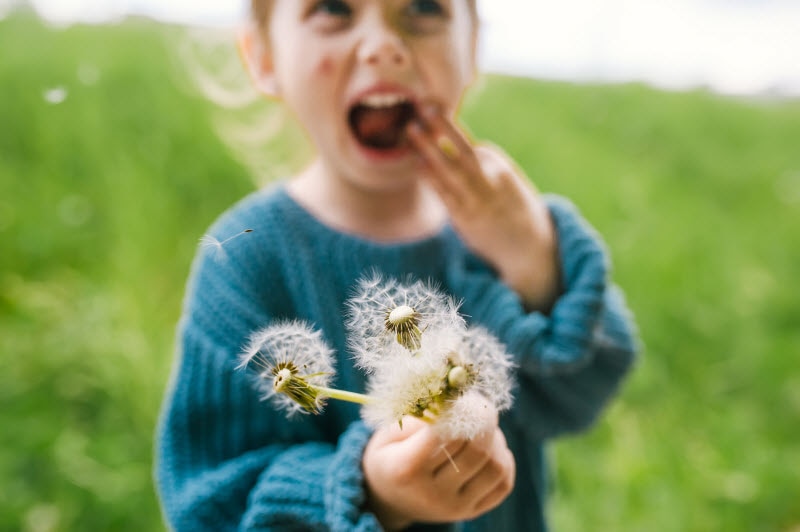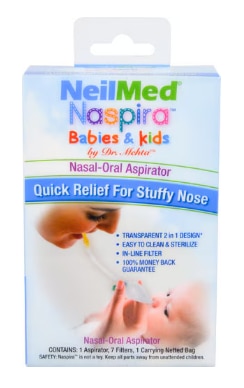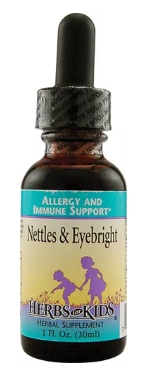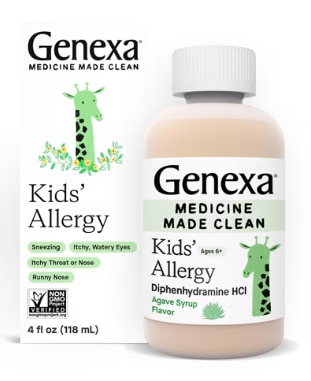Seasonal allergies are no joke — they really can put a damper on the fun that
should come with changing seasons. From runny noses and sneezing to itchy eyes and dry, scratchy throats, symptoms can rage on for weeks, or even months. It can start to feel like there’s no end in sight to the discomfort. Luckily, we have everything parents need to know about managing seasonal allergies in kids, including how to tell the difference between a cold and allergies, tips for symptom relief and must-have safe, natural products to help you forget that spring allergies were ever an issue for your family.

Seasonal allergies in kids
To reduce the stuffy noses and discomfort that seasonal allergies bring, it’s important to understand what causes allergies in kids and how you can easily tell whether your child is struggling with allergies or an illness.
What causes seasonal allergies in kids?
If your child suffers from seasonal allergies, they’re not alone—more than 50 million Americans deal with the unfortunate side effects of the changing seasons, often during the spring and fall. In children, seasonal allergies occur when their immune system kicks into overdrive against natural substances like
pollen, grass or mold spores. Typically, allergies begin in childhood and carry into adulthood, bringing on nagging symptoms like itchy eyes, a sore throat, and congestion. The good news? There are plenty of ways to soothe symptoms and make allergy season a little more bearable for everyone.
How to tell if it’s a cold or seasonal allergies
Seasonal allergies can cause many of the same symptoms as illnesses, which can make it tricky to tell them apart, especially as your child grows and experiences both. If you’re trying to decipher whether your child’s symptoms point to a cold, COVID-19 or just allergies, here are a few
signs that are more often linked to illness than seasonal allergies in kids:
- Headaches
- Fever
- Muscle aches
- Nausea, vomiting or diarrhea
- Shortness of breath or trouble breathing
Seasonal allergies symptoms in kids
While illnesses and allergies often share similar symptoms, certain
signs are more often linked to seasonal allergies. Be on the lookout for these common clues:
- Runny or stuffy nose
- Sore throat
- Itchy eyes, nose, mouth or ears
- Sneezing
Steps to successfully manage seasonal allergies in kids
While you can’t control allergens in the outside world, there are several simple ways to minimize the impact that seasonal allergens can have inside your home—and help your child enjoy more symptom-free fun outside. Here are some small changes that can make a big difference:
Keep allergens outside as much as possible
Although fresh spring air can feel great inside your home, having windows open can invite unwanted pollen and allergens inside. Keep windows and doors shut, and consider running an air conditioner, air filter or fans to keep the clean air flowing.
Don’t bring the allergens inside with you
Reduce your child’s exposure to allergens by having them change out of outdoor clothes as soon as they come inside. Additionally, having them shower after allergen exposure can help to rinse away lingering allergens and keep symptoms at a minimum.
Keep an eye on pets
Dogs and cats can unknowingly carry allergens inside with them on their fur. Whenever possible, give your pets a quick wipe-down with a damp paper towel or cloth when they come back into your home.
Dress for the weather
Wearing accessories like a hat or sunglasses can significantly decrease the exposure to airborne allergens around sensitive areas like the eyes—especially when the pollen count is high.
Be aware of allergen triggers
Certain conditions, like moldy/wet areas, tall weeds or grass that’s being mowed, can increase allergen exposure and irritation. Whenever possible, avoid these environments (or take extra precautions) until the conditions have improved.
Consider allergy medication
If allergy symptoms aren’t letting up for your child, consult with their pediatrician about a medication that’s right for them to improve their quality of life. In addition to prescribed medication, keep reading for a list of the best non-toxic products to provide some symptom relief for your child.
Naturalproducts to reduce seasonal allergies in kids
Beekeeper’s Naturals’ propolis spray soothes the throat while supporting overall immune health. Propolis, the main ingredient, has been
shown to provide symptomatic relief against allergies. It’s packed with antioxidants and other immunity-boosting ingredients like vitamin C, B vitamins, iron and buckwheat honey. It’s made without artificial dyes or color, chemicals or pesticides.

Made for babies and toddlers, NeilMed’s nasal aspirator quickly alleviates stuffy noses for easier breathing, feeding, and sleeping. This 2-in-1 design can be used as either a nasal and oral aspirator or a nasal bulb and is made without BPA, phthalates, or latex.

This immune-supporting herbal blend can be taken directly or mixed into drinks for an easier allergy season. This customized formula includes beneficial herbal extracts such as eyebright, echinacea purpurea root, peppermint, Oregon grape root, nettle leaf, chamomile flowers, sage leaf and milk thistle seeds.
Eyebright has been shown to reduce runny noses and watery eyes, and
nettle is often considered a natural antihistamine for allergy symptom relief.

Lolleez’ throat soothing lollipops are an easy way to get your child on board with taking medicine to counteract the headache of seasonal allergies. Formulated with naturally alleviating ingredients like pectin and honey, these lollipops are non-GMO, gluten-free and dairy-free. They’re offered in fun flavors like
Birthday Cake,
Watermelon and
Mixed Berry.

This allergy medicine for ages 6 and up is made to soothe symptoms like itchy or watery eyes, sneezing, runny noses, or itchy throats or noses. It’s formulated with clean ingredients like diphenhydramine HCl, organic citrus extract, organic agave syrup and purified water to provide safe and dependable comfort. Made without common allergens, gluten, animal products, GMOs or artificial preservatives, flavors, dyes or sweeteners, this clean allergy medicine is a fantastic option for alleviating symptoms without unnecessary additives or fillers.

Remember, to keep your little one safe, always consult with their pediatrician before giving them medications of any kind.
 Remember, to keep your little one safe, always consult with their pediatrician before giving them medications of any kind.
Remember, to keep your little one safe, always consult with their pediatrician before giving them medications of any kind.









